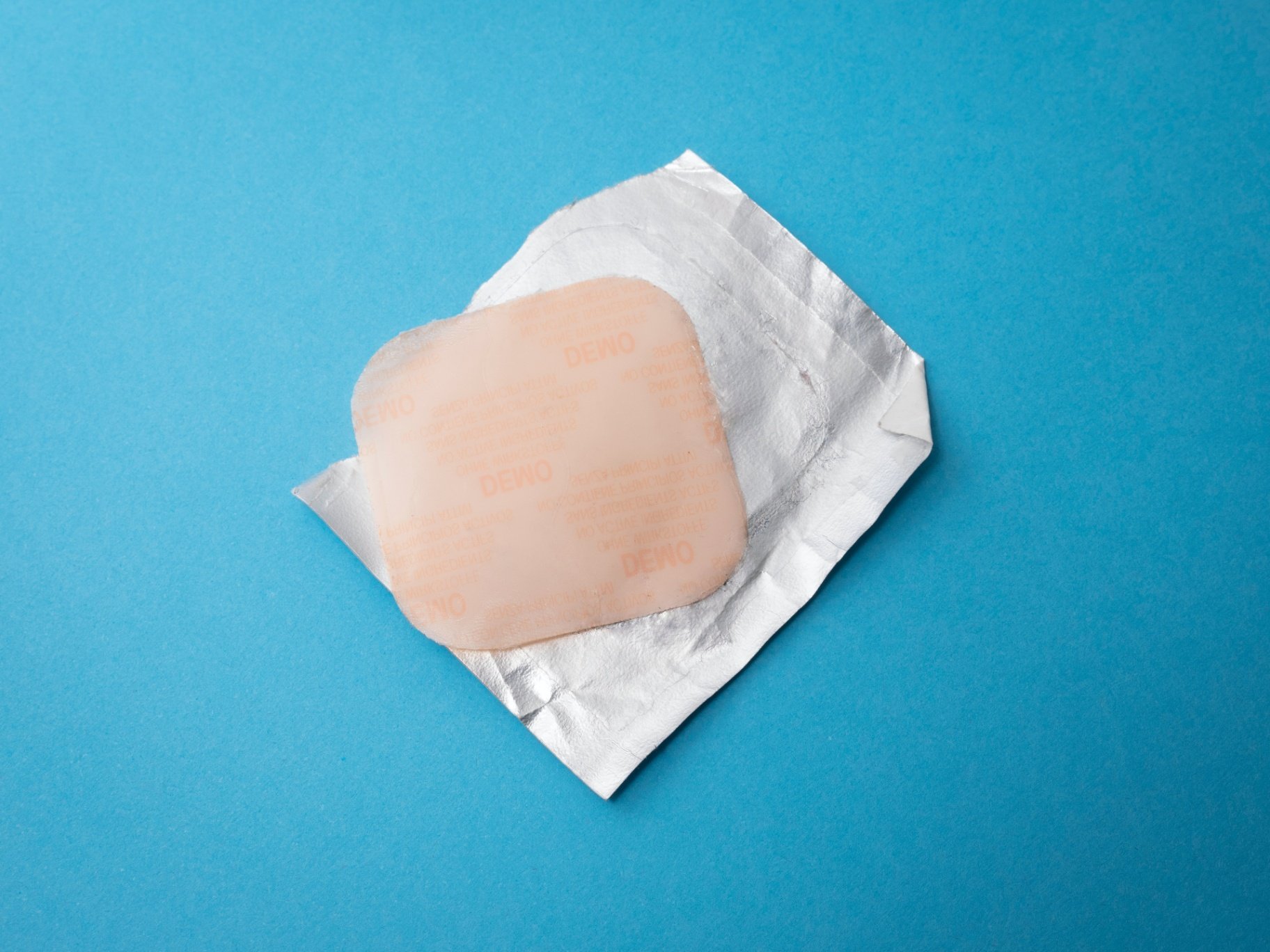Birth control, otherwise known as contraception, is necessary to prevent pregnancy in women. However, women or couples can choose which method is best for them based on personal preference and an assessment by a medical professional.
Suppose you’re in a heterosexual relationship or are sexually active. In that case, you need to know about birth control methods if you want to avoid pregnancy. If you have unprotected sex without actively using any birth control method, you’re at a high risk of an unwanted pregnancy.
An unwanted pregnancy can drastically change your life, and it can happen whether you’re ready or not. To decide which is best for you, you need to know different birth control features and possible side effects. So read on to find the best birth control method for you and your partner.
- Method 1: Birth Control Patch
- Method 2: Intrauterine Devices (IUDs)
- Method 3: Birth Control Pills
- Method 4: Tubal Ligation and Vasectomy
- Method 5: Condoms

Method 1: Birth Control Patch
Also known as a transdermal patch, a birth control patch is worn on the skin and releases progesterone and estrogen into the skin. Progesterone and estrogen are sex hormones that regulate and assist in developing a woman’s reproductive system.

It’s worn on the pelvis, arm, buttocks, or chest. Every day for a week, the transdermal patch releases a dose of hormones equal to the lowest dose of birth control pills. The patch lasts a whole week and should be worn for three weeks, with the fourth week vacant for menstruation.
A birth control patch is only available as a prescription. Depending on where you live, it may not be available for over-the-counter purchases from your local pharmacy without a doctor’s permission.
The patch has a success rate of 91 pregnancies prevented out of 100, as documented by the Food and Drug Administration. It is, however, not as effective for women who weigh above 198 pounds.
Pros, Cons, and Side Effects of Using the Birth Control Patch
An advantage to using the patch is that it’s super convenient and gives women more control. For example, women don’t need to remember to take pills every day.
The transdermal patch has side effects similar to birth control pills. For example, you may experience skin irritation on the spot where it’s placed. It could also become unattached while you’re in the shower.
The birth control patch doesn’t protect against sexually transmitted diseases (STIs). Instead, it leaves you open to contracting sexually transmitted infections.
Method 2: Intrauterine Devices (IUDs)
Intrauterine devices (IUDs) are small, T-shaped devices inserted into the uterus by a healthcare provider. There are two major types of IUDs: copper(non-hormonal) and hormonal.

Hormonal IUDs release hormones to prevent the eggs from leaving the uterus and thicken the cervical mucus. There are three types: Mirena (effective for five years) and Liletta and Skyla (effective for up to three years).
Copper IUDs do not release hormones into the woman’s system and are known as Paragard.
Instead, the copper IUD releases copper ions into the uterus, making the uterus and fallopian tube inhabitable for the sperm cells by changing the fluids there. They last for up to 10 years.
Pros, Cons, and Side Effects of Using the Intrauterine Devices
Both types of IUDs are highly effective, up to 99%, in preventing pregnancy in women. In addition, they may reduce menstrual cramps and flow. They are also a great long-term solution to preventing pregnancy.
However, intrauterine devices are considered expensive compared to other birth control methods. In addition, they slip out of place for some women, especially during their periods. It also doesn’t protect against STDs and increases the risk of pelvic infections.
Hormonal IUDs may cause the same side effects as the birth control pill. They also cause spotting between periods (3 to 6 months on Skyla and Mirena), worse period cramps, heavier periods (with copper IUDs), and mild pain after insertion. Lastly, there may be a great risk of an ectopic pregnancy.
Method 3: Birth Control Pills
Birth control pills are a hormonal contraceptive method that blocks the release of an egg, meaning that there isn’t any egg for the sperm to fertilize, hence, preventing pregnancy. They’re also known as oral contraceptives because they’re administered orally.

There are two types of birth control pills. The combination pill contains estrogen and progestin (synthetic progesterone), and the mini pills contain only progestin.
When taken correctly, it’s practical to tune a 0.1% chance of getting pregnant. But with average use, it increases to 5%.
Beyond pregnancy prevention, women use oral contraceptives to manipulate their periods and stall them when on vacation or during critical events. Doctors also prescribe them for women with painful periods, hormonal imbalances, premenstrual syndrome (PMS), and endometriosis.
Cons and Side Effects of Birth Control Pills or Oral Contraceptives
A significant letdown with oral contraceptives is that you’ll need to take it exactly as prescribed, every time, every day. It also doesn’t protect against STIs. In addition, the side effects of birth control pills differ from woman to woman.
You might experience nausea, spotting between periods, breast tenderness, migraines, weight gain, mood changes, irregular periods, decreased sex drive, etc. Also, taking the pills raises your risk of high blood pressure, hypertension, and blood clots and can cause a stroke or heart attack.
According to the National Cancer Institute, long-term side effects of hormonal birth control pills are an increased risk of breast cancer, ovarian cancer, colorectal cancer, and cervical cancer. Birth control pills also have the highest number of possible side effects.
Method 4: Tubal Ligation and Vasectomy
Tubal ligation is a permanent surgical birth control method that involves cutting, blocking, or tying the fallopian tubes. It prevents the eggs from traveling to where they can be exposed to sperm cells and stops the sperm from coming in contact with the eggs.

A healthcare professional performs the surgical process in a hospital or fertility clinic. First, the woman is anesthetized (put to sleep), and then the doctor makes one or two small incisions on her abdomen. Next, the doctor inserts a flexible tube (laparoscope) into the hole and closes the fallopian tube.
A vasectomy is also a surgical procedure. It closes off the tube (vas deferens) that transports sperm to the testes, preventing the release of the sperm to fertilize an egg. The doctor performs the vasectomy while the patient is awake but administers a local anesthetic to remove the pain.
As with female sterilization, the doctor makes a small incision in the upper part of the scrotum and ties or cuts off the vas deferens. The man can return home to regular activity immediately. It’s a more straightforward method than tubal ligation.
Pros, Cons, and Side Effects of Tubal Ligation
The female sterilization method is irreversible, however, a male vasectomy can be reversed at any time. They are usually used by women and men who are sure they never want to have children. Tubal ligation can also be performed immediately after childbirth or during a Caesarian section.
Depending on your doctor’s method, male and female sterilization has about three to seventeen failures out of a thousand. Therefore, they’re almost 100% effective and have one of the highest effectiveness rates in preventing pregnancy and abstinence.
Some might find the male and female sterilization procedures to be expensive procedures. Despite its success rate, it does nothing to prevent contracting sexually transmitted diseases like HIV.
Method 5: Condoms
Condoms are the most prevalent barrier birth control methods and work by putting a barrier between the semen and the egg. There are different types of condoms for males and females as well as different brands.

Male condoms are the most commonly used. They’re worn over the penis before penetrative sex and cannot be reused for another round.
When the male partner ejaculates, the barrier condom catches the semen and stops them from entering the vagina to fertilize the eggs.
Female condoms are less widely used and cost more than male condoms. They’re pouch-like plastic condoms inserted into the vagina and a spermicide before sexual intercourse.
Pros, Cons, and Side Effects of Condoms
Male condoms are 82% effective, while female condoms are 79% effective but not as effective as other forms of birth control. You don’t need a doctor’s prescription to purchase a condom. They’re also cheaper than most contraceptives and are efficient in preventing STDs.
Condoms are typically made out of latex. However, people who have a rubber allergy can use condoms made out of silicone, polyurethane, natural animal membrane, or other synthetic material. Some are scented, flavored, or spiked, providing room for extra excitement during intercourse.
Male and female condoms also tear or puncture easily, opening the barrier and allowing semen to pass to the vagina. Known side effects are related to the interaction between the material and body parts. Condoms may irritate the vagina, on the vulva, penis, or anus.

Conclusion
Birth control methods aren’t one-size-fits-all, so consult a medical doctor and do personal research to understand which one is best for you. You don’t need to decide immediately. Instead, you may need to take a few days or hours to think about your decision.
Birth control or contraceptive methods work best when you follow your doctor’s prescription and use them correctly. In addition, you must familiarize yourself with your final option, understand how it works, and know possible side effects.







